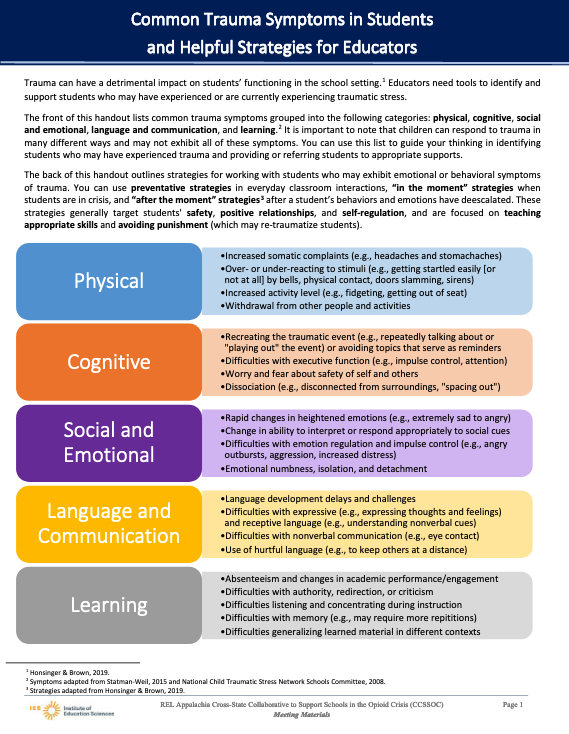Trauma can have a detrimental impact on students’ functioning in the school setting.1 Educators need tools to identify and support students who may have experienced or are currently experiencing traumatic stress.
The front of this handout lists common trauma symptoms grouped into the following categories: physical, cognitive, social and emotional, language and communication, and learning. It is important to note that children can respond to trauma in many different ways and may not exhibit all of these symptoms. You can use this list to guide your thinking in identifying students who may have experienced trauma and providing or referring students to appropriate supports.
The back of this handout outlines strategies for working with students who may exhibit emotional or behavioral symptoms of trauma. You can use preventative strategies in everyday classroom interactions, “in the moment” strategies when students are in crisis, and “after the moment” strategies3 after a student’s behaviors and emotions have deescalated. These strategies generally target students’ safety, positive relationships, and self-regulation, and are focused on teaching appropriate skills and avoiding punishment (which may re-traumatize students).
Footnotes
1 Honsinger & Brown, 2019.
2 Symptoms adapted from Statman-Weil, 2015 and National Child Traumatic Stress Network Schools Committee, 2008
3 Strategies adapted from Honsinger & Brown, 2019.
Topics: External Partner Resource Trauma Trauma

